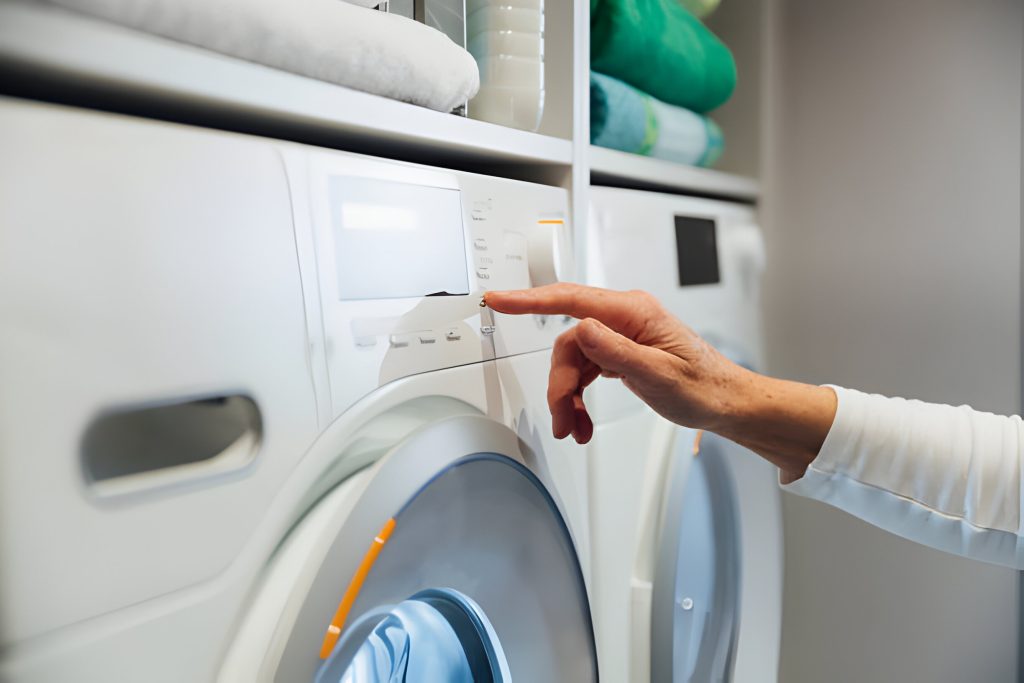At a glance
- Tailor energy-saving practices to your state’s conditions, optimising savings in appliance usage and heating/cooling methods.
- Choose ENERGY STAR-rated appliances and practice smart usage habits to minimise electricity consumption and reduce utility bills.
- Invest in proper insulation and sealing to maintain indoor comfort and prevent energy loss, saving on heating and cooling expenses year-round.
- Implement water-saving fixtures and habits to conserve water and decrease energy consumption related to heating water, contributing to financial and environmental savings.
As Australian households navigate the challenges of rising living costs, including energy expenses, finding practical solutions to reduce their energy becomes paramount. If we practice simple energy-saving tips from one room to another within our houses, we can significantly reduce energy usage, which means savings.
Energy-saving tips room by room will help reduce our electricity bills and benefit our environment by promoting an energy-efficient ecosystem. Let’s learn how to do it.
We will explore energy-saving tips tailored to various regions, including VIC, QLD, NSW, SA, and ACT. By comparing energy-saving practices across different states, we aim to provide actionable insights to help Australian homeowners effectively manage their energy consumption and reduce expenses while maintaining comfort and convenience.
Energy Saving Tips for Every Room
1. The Kitchen
When it comes to energy-saving tips in the kitchen, even minor adjustments can make a big difference. For example, in VIC, where energy prices may be higher, opting for energy-efficient appliances and minimising preheating can lead to significant savings. Similarly, in QLD, where temperatures are typically higher, alternative cooking methods like microwaves or slow cookers can help reduce the need for oven usage, thus conserving energy. By comparing energy-saving practices across different states, homeowners can tailor their approach to suit regional conditions and optimise savings.
Efficient use of refrigerators and freezers is essential for minimising energy consumption. In NSW, where energy prices may vary, maintaining proper airflow around appliances and setting optimal temperature levels can help reduce energy usage. Similarly, positioning appliances away from direct sunlight and regular maintenance can maximise efficiency in SA, where temperatures can fluctuate. Homeowners can identify region-specific tips to achieve optimal results by comparing energy-saving strategies across different states.
2. Bathroom
Reducing hot water usage in the bathroom is crucial for energy savings. In ACT, where energy prices may fluctuate, installing energy-efficient shower heads and minimising shower time can help reduce hot water consumption. Similarly, in NSW, turning off appliances when not in use and maximising natural lighting can further conserve energy. Homeowners can implement customised strategies to reduce energy usage and lower expenses by comparing energy-saving tips across different states.
In QLD, where energy costs may be higher, natural drying methods like clotheslines or drying racks can help reduce reliance on energy-intensive dryers. Similarly, washing clothes in cold water and cleaning lint filters regularly in VIC can contribute to energy savings. By comparing energy-saving practices across different states, homeowners can adopt tailored approaches to maximise efficiency and minimise costs based on regional conditions.
3. Living Room
Efficient heating and cooling practices are essential for energy savings in the living room. In SA, where temperatures can be extreme, utilising space heaters or ceiling fans instead of central heating and air conditioner cooling systems will reduce energy use. Similarly, proper insulation and sealing draughts with door snakes can prevent heat loss and lower energy bills. Homeowners can identify region-specific solutions to optimise comfort and savings by comparing energy-saving techniques across different states.
4. Bedroom and Study
Implementing energy-saving practices in the bedroom and study can further improve overall efficiency. In VIC, where energy prices may be higher, using energy-saving power boards and switching off appliances when they are not in use helps reduce
standby power consumption. Similarly, in ACT, investing in energy-efficient electronics and utilising power-saving features can lower energy bills. By comparing energy-saving measures across different states, homeowners can customise their approach to maximise savings and sustainability.
Insights on energy discounts and how they work?
Insights on electrical appliances
You can also equip yourself with proper knowledge about handling each electrical appliance you use in your home to improve energy-saving.
1. Lighting
Lighting contributes to a significant portion of a home’s energy usage. To reduce this consumption, replace traditional incandescent bulbs with energy-efficient LED or CFL bulbs. Not only do these bulbs consume less energy, but they also last much longer, saving you money in the long run. Also, make it a habit to turn off lights when not in use. Also, use natural light during the day by lifting the curtains and blinds.
2. Heating and Cooling
Heating and cooling your home can significantly drain energy resources. To minimise energy usage in this area, you can install a programmable thermostat to regulate temperatures based on your schedule. Set it to lower temperatures in the winter and raise them in the summer when you’re away from home or asleep. Also, don’t forget to clean or replace air filters regularly to ensure your HVAC system operates efficiently.
3. Appliances
Household appliances account for a considerable portion of your home’s energy consumption. When shopping for new appliances, look for models with a proper ENERGY STAR rating, which indicates that they meet strict energy efficiency guidelines. Additionally, be mindful of how you use your appliances – for example, only run your washing machine or the dishwasher when you have a full load, and use the cold water setting whenever possible to save on heating costs and be more energy efficient.
4. Insulation and Sealing
Proper insulation and sealing are essential for maintaining a comfortable indoor environment while minimising energy loss. Insulating the attic, walls, and floors during winter will prevent heat from escaping and entering during the summer. Furthermore, sealing cracks or gaps around windows, doors, and ducts will prevent air leaks. These simple steps can significantly reduce heating and cooling costs, improve indoor comfort and make your home energy efficient.
5. Water Usage
Conserving water helps save this precious resource and reduces energy consumption associated with heating water. Installing low-flow faucets and showerheads reduces water usage without sacrificing performance. Fix any leaks promptly, as even a tiny drip can lead to a surprising amount of water wasted over time. Finally, consider upgrading your existing water heater or insulating system to a more energy-efficient one to reduce heat loss.
6. Electronics and Gadgets
Electronics and gadgets are notorious energy vampires, consuming power even when unused. Combat this by unplugging devices without using power strips to turn them off quickly. Take advantage of power-saving features on your electronics, such as automatic shut-off timers or sleep mode. And when it’s time to replace old electronics, opt for energy-efficient models with high ENERGY STAR ratings which will help reduce your electricity bills.
In conclusion, effective energy-saving practices are essential for Australian households looking to reduce expenses and minimise environmental impact. Homeowners can identify region-specific strategies to optimise efficiency and savings by comparing energy-saving tips across different states.
Whether in VIC, QLD, NSW, SA, or ACT, implementing tailored approaches to energy conservation can help you create a more cost-effective and sustainable home environment. With proactive measures and a commitment to energy efficiency, homeowners can achieve significant savings while maintaining comfort and convenience.
-
Comprehensive insights into the energy bill relief fund in Australia
5 May 2024
Energy
-
Find the best electricity deal for electric vehicle charging
28 April 2024
Gas & Electricity
-
Understanding energy demand charges: A guide for business owners
25 April 2024
Energy


